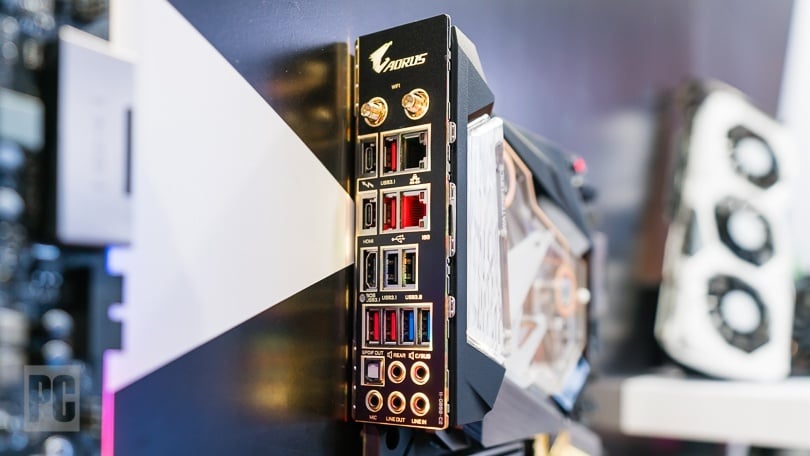- Joined
- May 2, 2017
- Messages
- 7,762 (2.60/day)
- Location
- Back in Norway
| System Name | Hotbox |
|---|---|
| Processor | AMD Ryzen 7 5800X, 110/95/110, PBO +150Mhz, CO -7,-7,-20(x6), |
| Motherboard | ASRock Phantom Gaming B550 ITX/ax |
| Cooling | LOBO + Laing DDC 1T Plus PWM + Corsair XR5 280mm + 2x Arctic P14 |
| Memory | 32GB G.Skill FlareX 3200c14 @3800c15 |
| Video Card(s) | PowerColor Radeon 6900XT Liquid Devil Ultimate, UC@2250MHz max @~200W |
| Storage | 2TB Adata SX8200 Pro |
| Display(s) | Dell U2711 main, AOC 24P2C secondary |
| Case | SSUPD Meshlicious |
| Audio Device(s) | Optoma Nuforce μDAC 3 |
| Power Supply | Corsair SF750 Platinum |
| Mouse | Logitech G603 |
| Keyboard | Keychron K3/Cooler Master MasterKeys Pro M w/DSA profile caps |
| Software | Windows 10 Pro |
As a general rule I'd agree with you, the problem is that the tech industry is reaching a saturation point of sorts where all the low-hanging fruit in terms of I/O and bandwidth has been exploited, requiring more and more expensive and exotic solutions to increase performance. PCIe 1.0 and 3.0 have essentially the same board designs. Sure, 3.0 is likely more strict in terms of trace routing, but it wasn't much of a challenge. USB hit this early (1.1 and 2.0 used the same cables; 3.0 doubled the pins, 3.1G2 doubled this again. 4.0 will likely follow the TB3 limitation of maximum 1-1.5m cables.). Memory is still scaling decently, but HBM and similar solutions show that there's a need for more bandwidth that can't be met with traditional trace layouts. There's definitely a question of if and how much DDR5 will drive up motherboard prices given the doubling of transfer speeds. The same things are happening on a smaller scale in chip design, in particular with the constant addition of more stuff to each product, from encode and decode blocks to supporting new I/O standards to the push for more fixed-function hardware (RTRT and so on) - these are pure additions, not just scaling up of what we already have, meaning that you'd need very good area scaling on a new node that is also affordable for this not to drive up the BOM.So every time there's a performance increase it must be matched with a corresponding price increase ?
By this logic, we should pay several million dollars for a GPU by now, as today's GPUs are probably over 10000 times faster than an S3 Virge or Matrox Mystique.
You've been brainwashed by the marketing "We have so much moar transistors cr4p in this chip and it's faster, so it MUST be more expensive"
That's not how it works dude.
Faster new gen replaces slower old gen, for same amount of money (+/-). That's how performance is pushed across the board...
But today what we have is a duopoly with a strong Cartel smelly odor... and no more crypto boom to blame.
Let's say that NV had their raytracing bs excuse for jacking up prices.
But what's AMD's excuse ? They aren't giving anything new... just a node shrink a bit more Mhz.
The chip itself is smaller. It should be CHEAPER than Polaris, not more expansive.
I hope the market punishes them by nobody buying these... but that's not happening because people do want faster GPUs, and there's just no choice anymore.
Overpriced or Overpriced. Take your pick.
Bleh...
All this sadly necessitates price increases to a certain degree. Adding more components (in various senses of the word) will always cost more than replacing components with better-performing like-for-like upgrades. Then there's not only inflation (which is rather trivial on time scales like these) but also other cost increases - after all, one of the necessities of a capitalist "eternal growth" system is that wages and costs rise in lockstep (otherwise you'd run out of potential new customers for your goods), meaning that price increases (at least for consumer goods) normally outstrip inflation alone.
Does this legitimize the price hikes we've seen over the past two generations? No. They're excessive, and significantly so. But some increase is to be expected.






